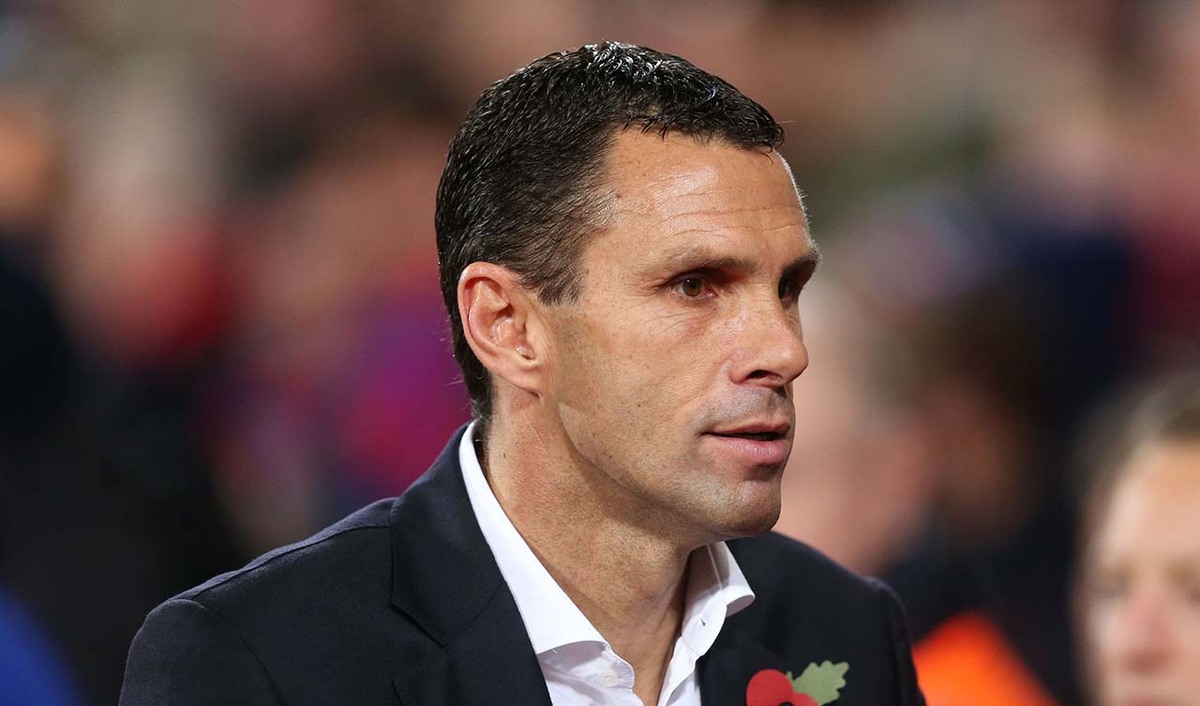




OUR BEST EVER OFFER - SAVE £100/$100
JOIN THE WORLD'S LEADING PROFESSIONAL DEVELOPMENT PROGRAMME
- 12 months membership of Elite Soccer
- Print copy of Elite Player & Coach Development
- Print copy of The Training Ground
Clever keeper distribution
This session is about keeper distribution and retaining possession by building play from the back. It mimics short passes to centre-backs and midfield players, low driven and chipped passes to full-backs and wide midfielders, and longer passes to centre-forwards and wide attackers (through half-volleys and volleys).
| Area | ¾ of a pitch |
| Equipment | Balls, cones, poles, variety of goals |
| No. of Players | 3 |
| Session Time | Each drill 15mins, Progression 10mins, Game 20mins |
This session is about keeper distribution and retaining possession by building play from the back. It mimics short passes to centre-backs and midfield players, low driven and chipped passes to full-backs and wide midfielders, and longer passes to centre-forwards and wide attackers (through half-volleys and volleys).
At Sunderland, the keeper is deemed to have a major involvement in the style of football we try to play, so practices directly involving him in team attacks are very important. While prompting outfield movement, the session quickly improves the keeper’s technical skill, widens his range of passing ability, improves awareness and lessens the risk of him losing possession. We’ll rotate keepers throughout the session.
What do I get the players to do?
Small goals practice
We set up as shown (1) and begin with a pass into keeper 1. The practice is maximum three touches and the ball cannot touch a mannequin or the practice is restarted.
1
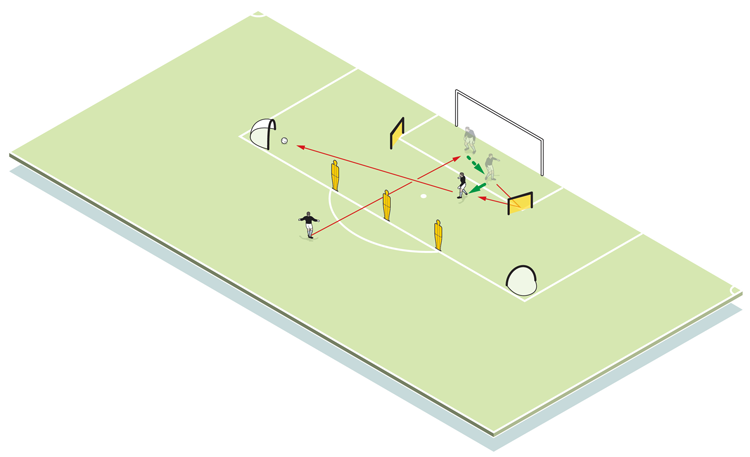
We now repeat this process six times ensuring the keeper switches between left and right sides (thus left and right feet).
How do I progress the session?
To progress we’ll ask keeper 2 to press the receiving keeper after the one-two with the rebound board (2). Keeper 1 must still look to find space to pass into the small goal.
2
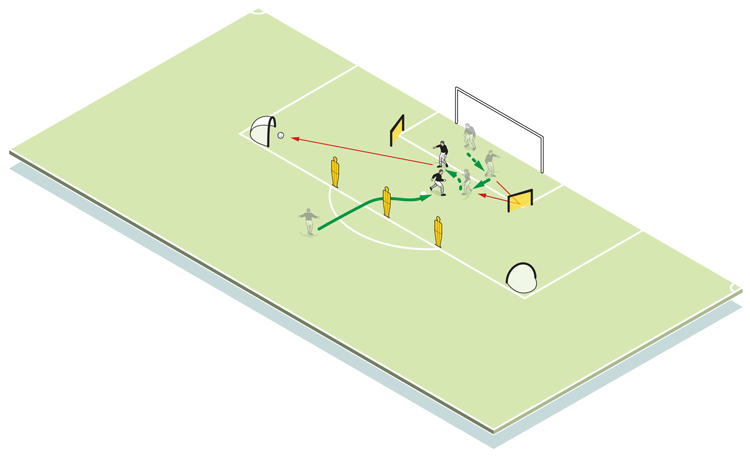
Five-a-side goals practice
Now we change the set-up (3a). The receiving keeper plays a one-two with the rebound board, then chips or clips a pass over the poles and into the half-size goal.
3a
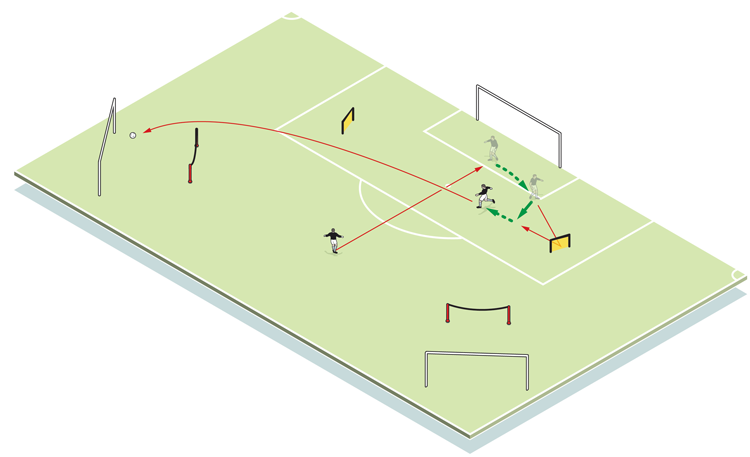
Again, repeat on both sides (3b).
3b
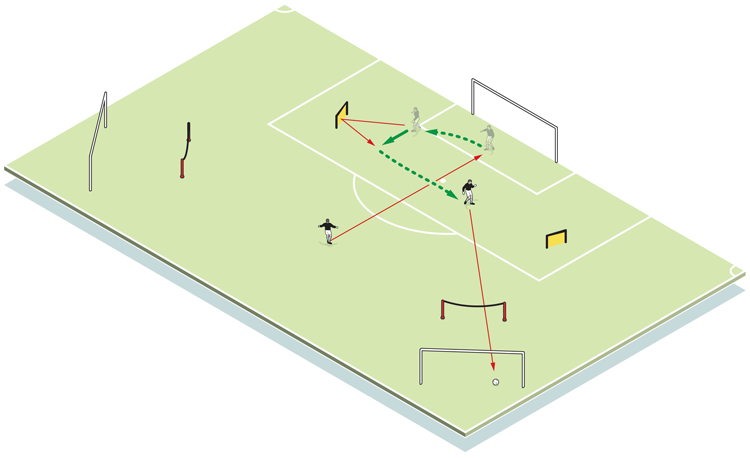
Three-quarters pitch
Bringing in a third keeper, the one-two with the rebound board leads to the ball being chipped to keeper 3, who is positioned the other side of the poles. This keeper dribbles down the line and sends over a cross that the working keeper has to catch (4a).
4a
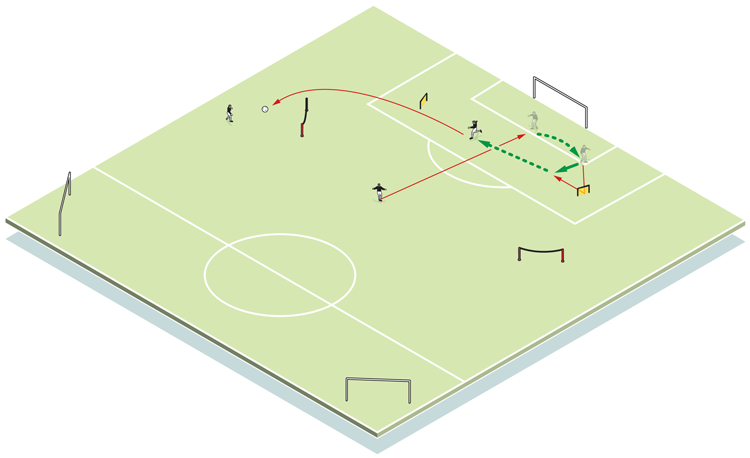
He now moves to the edge of the penalty box, rolls the ball out onto the floor, then distributes by using a side volley/half volley into the full goal, which is positioned beyond halfway (4b).
4b
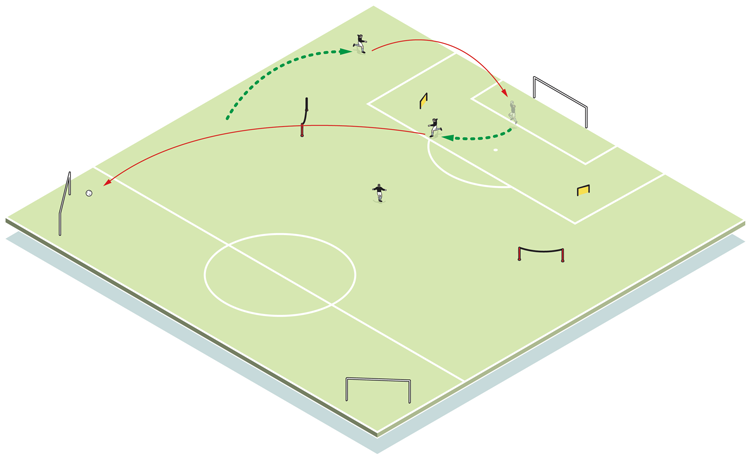
How do I progress the session?
Adding in extra interplay is a good way of progressing, and we’ll also limit the time and touches for keeper 1.
What are the key things to look out for?
The keeper must remain calm and composed in possession of the ball at all times, even when being closed down – this can be practised in a small-sided game situation with the keeper conditioned to using his feet as much as possible and involved in building play from the back. Weight and accuracy of pass – in receiving and feeding out – are imperative, as is good playing technique. The most common fault is over-hitting passes (either too hard or too high), and panicking under pressure.
Related Files
Editor's Picks
Attacking transitions
Deep runs in the final third
Using the goalkeeper in build-up play
Intensive boxes drill with goals
Penetrating the final third
Creating and finishing
My philosophy
Pressing initiation
Compact team movement
Coaches' Testimonials

Alan Pardew

Arsène Wenger

Brendan Rodgers

Carlos Carvalhal

José Mourinho

Jürgen Klopp

Pep Guardiola

Roy Hodgson

Sir Alex Ferguson

Steven Gerrard
Coaches' Testimonials

Gerald Kearney, Downtown Las Vegas Soccer Club

Paul Butler, Florida, USA

Rick Shields, Springboro, USA

Tony Green, Pierrefonds Titans, Quebec, Canada
Join the world's leading coaches and managers and discover for yourself one of the best kept secrets in coaching. No other training tool on the planet is written or read by the calibre of names you’ll find in Elite Soccer.
In a recent survey 92% of subscribers said Elite Soccer makes them more confident, 89% said it makes them a more effective coach and 91% said it makes them more inspired.
Get Monthly Inspiration
All the latest techniques and approaches
Since 2010 Elite Soccer has given subscribers exclusive insight into the training ground practices of the world’s best coaches. Published in partnership with the League Managers Association we have unparalleled access to the leading lights in the English leagues, as well as a host of international managers.
Elite Soccer exclusively features sessions written by the coaches themselves. There are no observed sessions and no sessions “in the style of”, just first-hand advice delivered direct to you from the coach.
